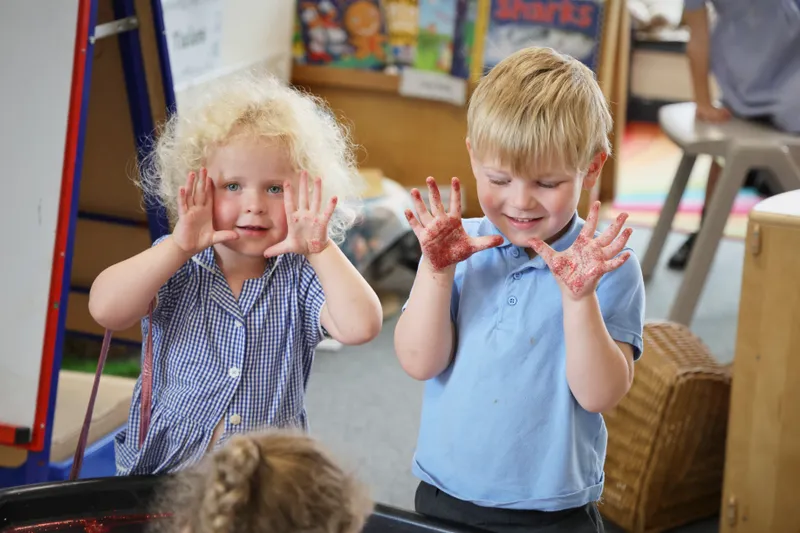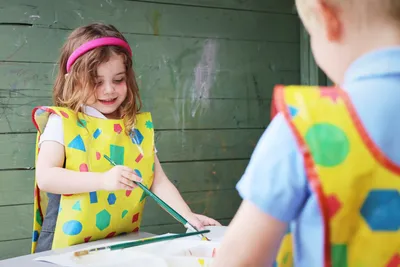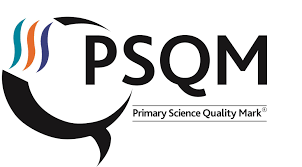Art

Intent
At Drighlington Primary School we believe that art stimulates creativity, imagination and inventiveness and is a form of expression and communication. We believe that art gives our pupils the skills, concepts and knowledge necessary for them to demonstrate responses to ideas and experiences. Art enables our children to communicate what they see, feel and think. Children have the freedom to explore, create and develop their ideas through the use of colour, texture, form, pattern and different materials and processes. Self-evaluation of work is encouraged and children are taught how to be resilient to achieve their goals.
Children are encouraged to ask questions about what they see and be explorers of the world around them. At Drighlington Primary School, art is not just taught in a designated Art lesson, but wherever appropriate it is linked to topics and the wider curriculum as it gives children the opportunities to bring topics to life. Children explore ideas and meanings through the work of significant artists and designers.
We aim to inspire, nurture and challenge our children to express their individuality.
“Art is not just a subject to learn, but an activity that you can practise with your hands, your eyes, your whole personality” (Quentin Blake, Illustrator and Artist).

Implementation
Art is crucial to the development of an awareness and appreciation of beauty and quality. We aim to offer artistic activities using a variety of media to explore techniques in art, and aim to teach all pupils the necessary skills and confidence to express themselves creatively. Pupils are also taught to appreciate the work of artists and encouraged to develop a true sense of art appreciation.
We aim to provide high-quality art which engages, inspires and challenges pupils, equipping them with the knowledge and skills to experiment, invent and create their own works of art. A variety of skills are taught and revisited across the school, including drawing, painting, printing, sculpting, craft and designing. The children are able to work using a variety of media giving them the opportunity to experiment with the skills they have been taught. The children learn about a variety of artists through their art and other foundation subject lessons and throughout art weeks.
Art is implemented across the curriculum. In different subjects, art is used to enhance learning. In history, children have learnt about cave painting and looked at portraits of historical figures. In geography children have learnt about traditional drawing and painting from countries around the world.

Our aim is that all children:
- produce creative work, exploring their ideas and recording their experiences
- become proficient in drawing, painting, sculpture and other art techniques
- evaluate and analyse creative works using the language of art
- know about great artists and understand the historical and cultural development of their art forms.
As children progress, they are able to think critically and develop a more rigorous understanding of art. They know how art reflects and shape our history, and contribute to the culture, creativity and wealth of our nation.
To support children who are facing social economical barriers, additional opportunities are provided to further develop and improve their skills including working with other schools and artists. We give children the opportunities to attend after school clubs, gaining skills from a local artist, Penny Rowe.


Children have the chance to visit museums and galleries, developing their skills of observation and evaluation. We also celebrate and recognise the work children bring into school from home.
Art lessons offer many cross curriculum requirements links and these can be identified within each class teacher's medium term planning. Specifically, art can link with aspects of English, Science, History, Geography, PSHE and RE.





Giving children opportunities to be imaginative, explore different materials and develop their ideas is an important part of the Early Years Foundation Stage within the 'expressive art and design' area of provision which are enhanced to ensure vocabulary. Children are encouraged to practise their handling, moving and control skills (for example, by painting or using clay). Materials are always accessible for children to develop and explore their ideas and to be imaginative.





There is an opportunity for some children to work with a local artist on special projects. She works with children using charcoal, water colours, clay and recycled materials. Much of the pieces replicates art work within Leeds Art Gallery which the children later visited.



Impact
Children's knowledge, skills and understanding of artistic techniques can be evidenced throughout their time at Drighlington Primary School. Sketch books are used as evidence of progression. They are such an important resource in Art. They allow the children to develop skills and express their creativity in so many different ways. We teach our children to use their sketchbooks as a journey - it is not the outcome necessarily that is important but the journey they take to get there. The best thing about them, is there is no right or wrong.
as well as final pieces used in displays which strengths the children's sense of pride in their art work. All children use a range of technical vocabulary as well as understanding the skills and processes involved. Children will become more confident in analysing their work and sharing their opinions on their own and other works of art. Children will show competences in improving their resilience and perseverance by continually evaluating and improving their work. Children develop both a love and appreciation of art through a creative curriculum and first quality teaching.
How you can help your child at home
Partnerships with parents and carers is an important part of Drighlington Primary School. Working closely with parents enables us to ensure parents feel confident that their child is safe, cared for and is receiving a high quality education during their school hours. There are a number of things you can do to show your child that you value art.
1. A sketchbook at home to continue their exploration; to doodle, try new skills, express their ideas and thoughts.
2. Talk to your child about their drawings.
3. Draw with your child.
4. Visit galleries.
5. Find the value of art in everyday things.
6. Have fun! Art is playful, messy and fun.
Places to visit
Further support and useful weblinks
Early Years Development Matters
https://www.gov.uk/government/collections/national-curriculum
https://www.nationalgallery.org.uk/visiting/virtual-tours - National Gallery - Virtual Tours
https://www.bbc.co.uk/cbeebies/joinin/importance-of-art-and-craft-for-children
https://www.youtube.com/watch?v=uXlO6ocidiY - How to draw a face for kids
https://www.youtube.com/watch?v=nDTAzOrH4AM - How to draw cartoon faces
https://www.youtube.com/watch?v=QafYV5dEhqU - Easy animal drawings
https://www.oxfordowl.co.uk/for-home/school-year/subject-guides/art-and-design-at-primary-school/
https://www.parents.com/fun/arts-crafts/

